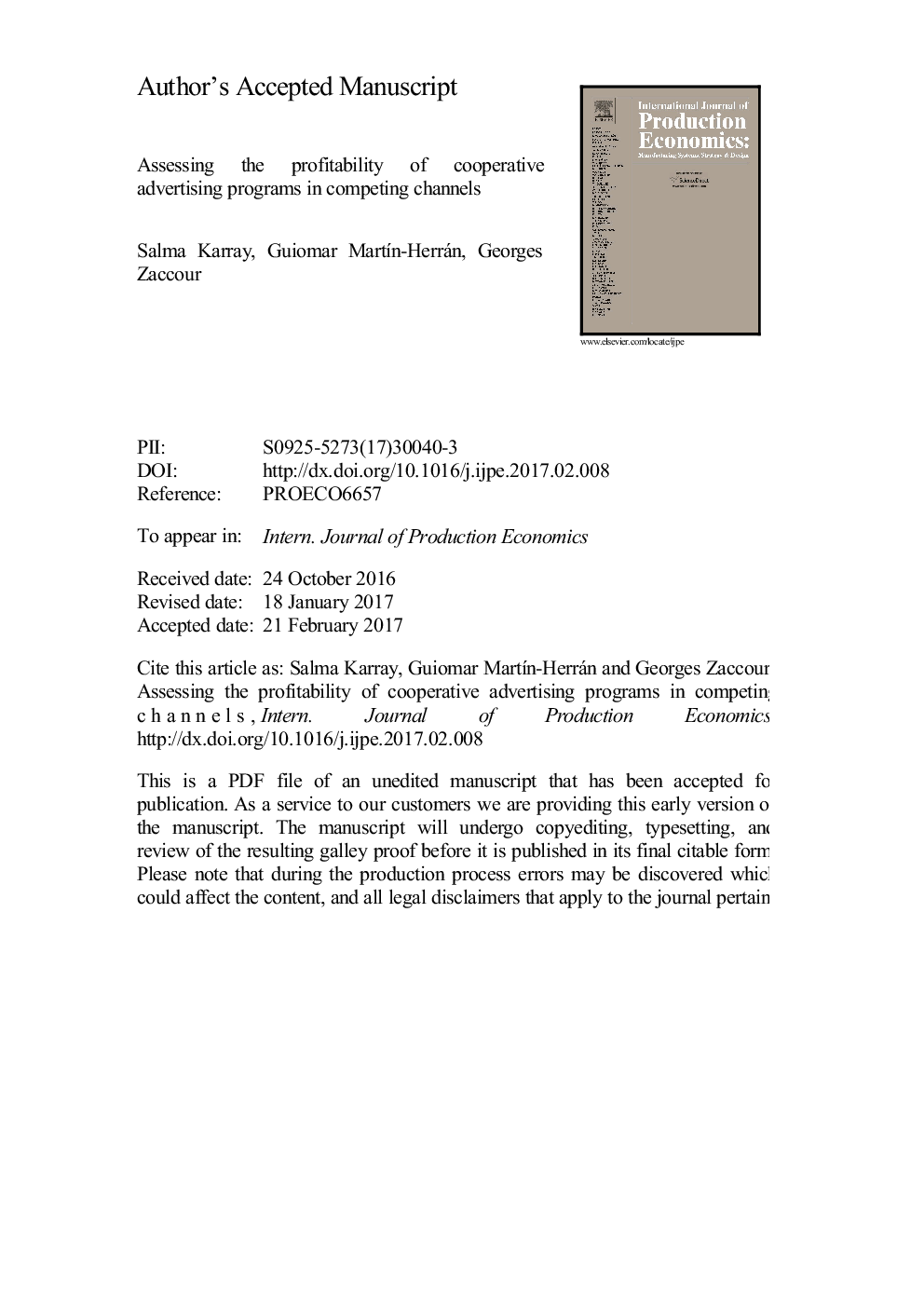ترجمه فارسی عنوان مقاله
ارزیابی سودآوری برنامه های تبلیغات تعاونی در کانال های رقابتی
عنوان انگلیسی
Assessing the profitability of cooperative advertising programs in competing channels
| کد مقاله | سال انتشار | تعداد صفحات مقاله انگلیسی |
|---|---|---|
| 111100 | 2017 | 40 صفحه PDF |
منبع

Publisher : Elsevier - Science Direct (الزویر - ساینس دایرکت)
Journal : International Journal of Production Economics, Volume 187, May 2017, Pages 142-158

